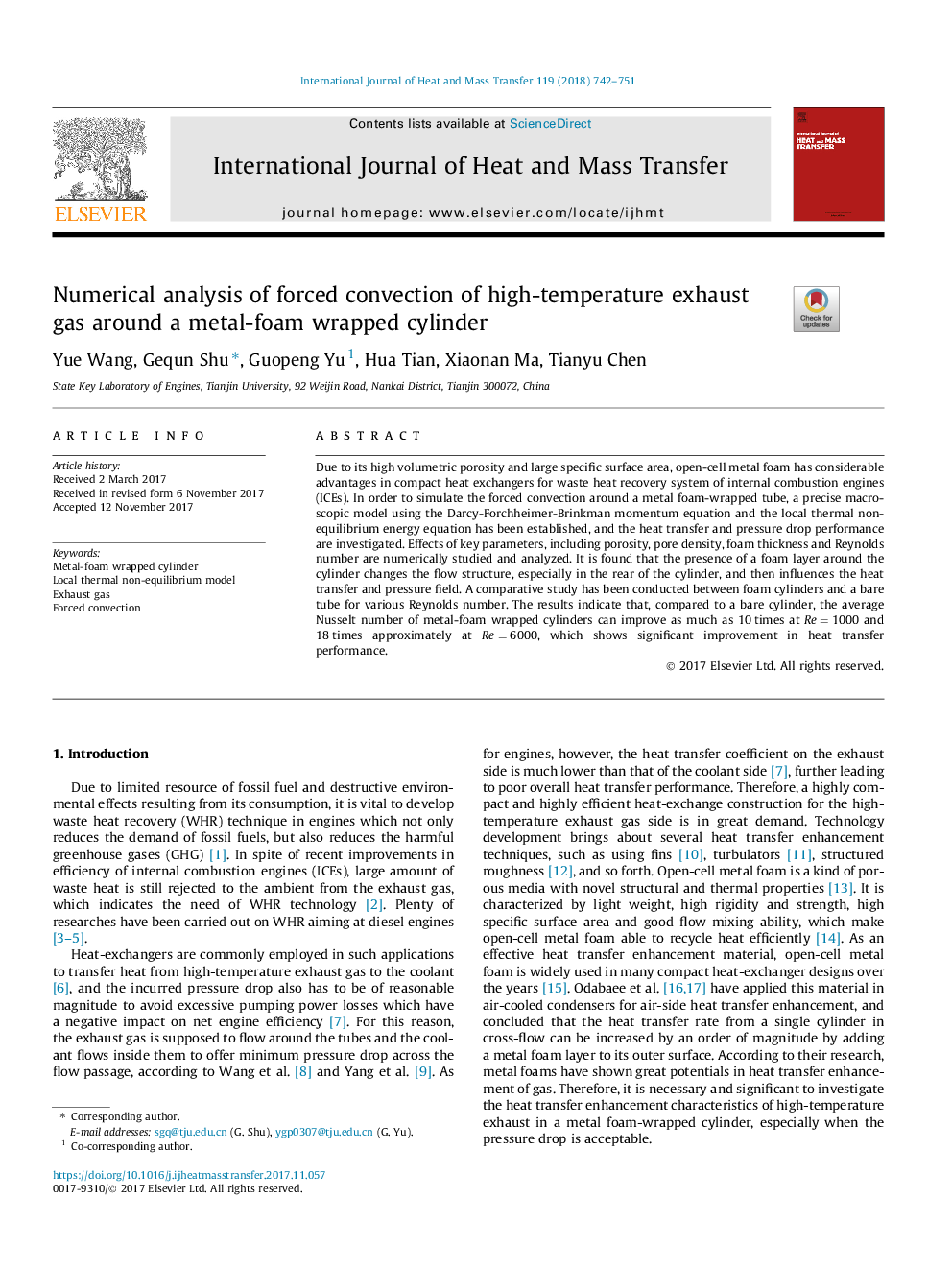| Article ID | Journal | Published Year | Pages | File Type |
|---|---|---|---|---|
| 7054747 | International Journal of Heat and Mass Transfer | 2018 | 10 Pages |
Abstract
Due to its high volumetric porosity and large specific surface area, open-cell metal foam has considerable advantages in compact heat exchangers for waste heat recovery system of internal combustion engines (ICEs). In order to simulate the forced convection around a metal foam-wrapped tube, a precise macroscopic model using the Darcy-Forchheimer-Brinkman momentum equation and the local thermal non-equilibrium energy equation has been established, and the heat transfer and pressure drop performance are investigated. Effects of key parameters, including porosity, pore density, foam thickness and Reynolds number are numerically studied and analyzed. It is found that the presence of a foam layer around the cylinder changes the flow structure, especially in the rear of the cylinder, and then influences the heat transfer and pressure field. A comparative study has been conducted between foam cylinders and a bare tube for various Reynolds number. The results indicate that, compared to a bare cylinder, the average Nusselt number of metal-foam wrapped cylinders can improve as much as 10â¯times at Re=1000 and 18â¯times approximately at Re=6000, which shows significant improvement in heat transfer performance.
Related Topics
Physical Sciences and Engineering
Chemical Engineering
Fluid Flow and Transfer Processes
Authors
Yue Wang, Gequn Shu, Guopeng Yu, Hua Tian, Xiaonan Ma, Tianyu Chen,
